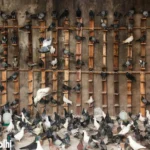On the afternoon of July 20, Quang Ninh province held a press conference to provide information about the capsizing of the Blue Bay 58 QN-7105 boat during a storm, resulting in 35 fatalities and 4 missing persons.
According to reports, on July 19, an unexpected storm with complex developments struck the area, causing the Blue Bay boat to capsize in Ha Long Bay, leading to 35 deaths, with 4 people still missing.
“The boat sank at 1:45 PM, but the province was only informed at 3:30 PM. Rescue forces were immediately deployed, and the provincial authorities personally directed search operations on-site.”
Rescue teams managed to save 10 people, who are currently receiving stable medical treatment at hospitals, with all expenses covered by Quang Ninh province. A 10-year-old child was transferred to the National Children’s Hospital in Hanoi for further care.
For the deceased victims, multiple ambulances were mobilized to transport their remains back to their hometowns.
Search efforts for the 4 missing individuals continue, with authorities deploying drones over tidal flats to expedite the operation before the storm worsens.
“The province will continue providing support to affected families and explore long-term assistance for orphaned children.”

Rescue vessels arrived at the capsized boat within 10 minutes of the incident, saving survivors. However, extreme weather conditions, including heavy rain and fog, complicated search efforts.
Regarding the question of why helicopters were not deployed, it was explained that the accident site was only 1 km from Tuan Chau and 3 km from the mainland. Given the stormy conditions, helicopter mobilization would have required extensive approvals and was deemed impractical. Rescue boats arrived promptly without waiting for formal orders.
After the accident, provincial police mobilized 14 boats, speedboats, and 200 officers to conduct continuous search and rescue operations overnight.
Authorities are urgently investigating the cause of the capsizing and will disclose findings in accordance with legal procedures.

Concerning safety regulations, passengers on cross-river ferries are required to wear life jackets, but this was not mandatory for the Blue Bay 58 QN-7105 tourist boat except in emergencies. Investigations revealed that 80% of victims were wearing life jackets when recovered. “Ha Long Bay tourist boats adhere to higher safety standards than national regulations—the capsized boat had a safety coefficient of 2-3, exceeding the standard requirement of just over 1.”
Quang Ninh’s meteorological agency issues three daily weather bulletins for tourism. At 1:30 PM on the incident day, a storm warning was issued—the time when boats were prohibited from departing. By 3:00 PM, normal weather resumed, and operations were permitted to continue.
When adverse weather was detected, inland waterway authorities notified boat owners. The capsized boat had departed shortly after noon.
Following the accident, authorities will refine emergency protocols and review measures to enhance fleet safety standards in Ha Long Bay.
This tragic incident has caused profound loss for families and significant impacts on tourism.
Over 1,000 personnel and hundreds of vehicles have been mobilized for round-the-clock search operations.
In response to Typhoon WIPHA’s approach, inland waterway authorities issued an urgent order suspending passenger vessel departures in Quang Ninh province.
As of






